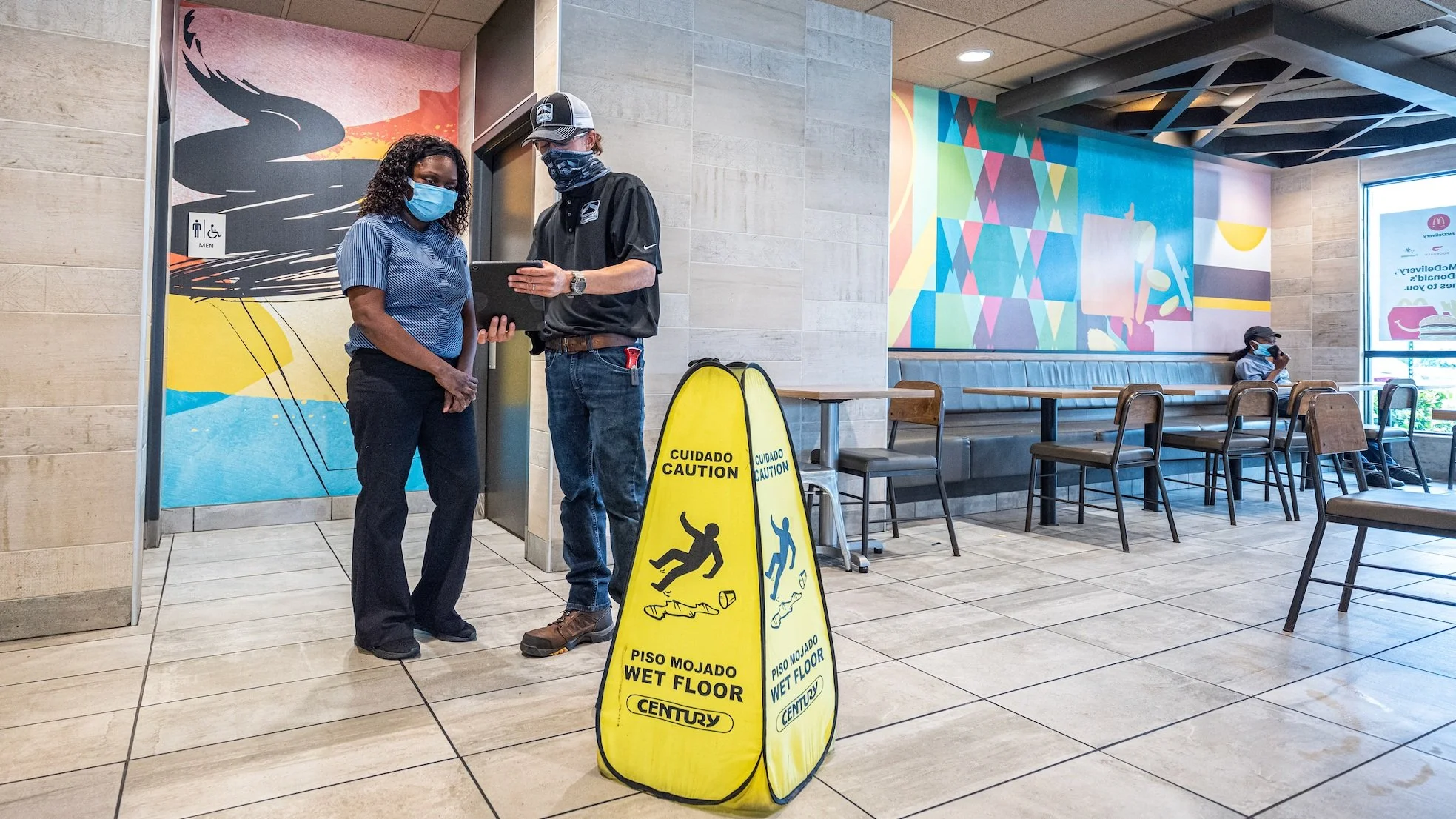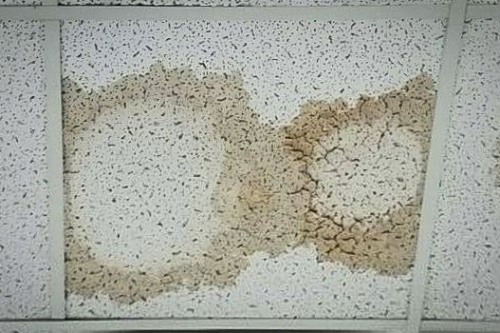Many times, businesses think that their roof is leaking when it's really an issue with their HVAC system. Fortunately, when equipped with some basic knowledge, it is pretty simple to differentiate the two. Learn how to identify the key differences between a roof leak and leaking HVAC systems, along with the appropriate actions to take in each scenario.
Step 1 - Ask yourself, is it raining?
It may sound like a silly question, but you would be surprised how often we receive calls for a roof leak and it hasn't rained in weeks. If that’s the case, the water needs to be coming from somewhere and it’s most likely from an HVAC unit.
Step 2 - Identify if the leak is coming from a vent or a stained ceiling tile
The location of the leak is a great indicator of where the water is coming from. If there’s a stained ceiling tile, remove it to see where the water is coming from. We often hear “the water” is dripping directly out of a silver thing." The large “silver thing” is an HVAC air register vent.
If the leak is determined to be an HVAC-related issue, you can stop the dripping momentarily by following the steps below.
How to Fix Your Leaking HVAC
Remember the good thing about an HVAC leak means that you’ll have it solved in minutes, and you typically don’t need to wait for a roofing expert. Troubleshooting an HVAC leak is easy and can be done by a manager or staff member and doesn’t require skilled training.
A clogged p-trap is a common culprit of HVAC leaks
Step 1 - Clear the P -Trap
The p-trap is typically a plastic pipe coming out of the unit and you’ll need to identify if it’s currently draining. If the p-trap isn’t draining, you’ll need to unclog it. If disassembly is easy, you’ll be able to quickly unclog it. However, if the p-trap doesn't dissemble, you can attempt to unclog it with a wire hanger, a pen, or your finger. Even if you notice that the p-trap is draining, we recommend you still take the time to clean it. This important preventative maintenance measure will help alleviate potential future HVAC-related leaks.
Step 2 - Secure the Panel Doors
Are the panel doors closed? Make sure they are properly secured and keep in mind that just because they might look closed doesn't mean they always are secured properly. I recommend you tug the doors gently to ensure they are secured.
HVAC PANEL DOOR TEST: Here’s a simple yet effective way to test whether an HVAC panel door is properly secured to the unit. Using a business card or a dollar bill, hold it up against the seam of the HVAC panel in question. This test will only work when the HVAC unit is running.
✔ If the business card falls to the ground, the panel is not allowing air into the unit which confirms that the panel door being tested is properly secured and should not pose any leak risks.
✖ If the business card sticks along a panel seam, the panel door is not properly secured as it is allowing air to be drawn into the HVAC unit. Until all the HVAC panel doors are inspected and secured properly, this suction will draw in water when it rains, thus causing interior leakage from a poorly secured HVAC panel.
Step 3 - Check the Coil
Locate the coils in the HVAC to check and make sure the coil has not frozen over. If the coil is frozen, the ice is usually melting and dripping down the return air vent.
Frozen coils
Overall, the process of determining if a leak is coming from your HVAC unit is straightforward. However, if you go through the steps listed above and the leak continues without rain, make sure to call a certified HVAC technician immediately to take a look at your unit.
If you have a roof leak, you can report it online at roofingsource.com/leak or by calling (833) 247-ROOF (7663) to get a Field Advisor on your roof ASAP.
Written by
Dylan Shealy
Field Support Representative








